Overwritten: How I secured my first solo exhibition.
An overview of lessons learned and knowledge gained.
Today’s post is going to be somewhat lengthy so if you want to see the installation pictures of the exhibition, and for information on where it is being displayed, please scroll down to the bottom of today’s newsletter, but if you are here for the long haul, than grab a drink, get comfortable because we will be here for while.
It is December 10, 2023. I am back at my grandmother's apartment after riding the train and bus for over two days across the United States from Warrensburg, Missouri, to Montreal, Quebec, and then hitching a ride from my aunt in Montreal back to Cornwall, Ontario (my hometown).
My wife is still in Missouri as I look for a new job and a place to live, essentially starting all over again after our move to the States didn’t work out for us.
I’m exhausted, emotional, and disoriented. Things feel like they are falling apart, I don’t want to be around family, I don’t want to talk about the situation or hear any more “I told you so’s” from my grandmother so I leave the apartment and start walking, my go to mode of escape when life is out of balance or to much to bear.
I’ve only been away for half a year, yet everything feels foreign to me. My homeland and hometown both feel like faces from high school I haven’t seen in a decade, and I’m not sure how to think about seeing them again. That sinking feeling of judgement one gets when seeing someone from their past, the egos need to assert itself as successful, accomplished, put-together, when instead you feel like a broken mirror in direct sunlight, shattered and refracted, impossible to put back together, blinded by yourself, but still holding on to some semblance of being a person.
Every small change I notice, my awareness becomes hypersensitive, and Cornwall feels like it has jumped ten years into the future from when I last walked its streets.
New businesses, new buildings, a new feel to the city. Old places seem to be diminishing, for sale signs on industrial lots I never thought would be redeveloped, buildings erected that used to be the joke of the town because they looked like they would never get built, my thoughts of home were changing, I was changing, as does the world and every human being over time.
That’s when I came across it, an old shoe store that had long been out of business being demolished in the chill of a dark Sunday evening in Decemeber, the backhoe’s floodlights the only thing illuminating the crumbling brick walls as it dismantled the old structure with its steel bucket as a small crowd gathered to watch.
I bolted back to my grandmother’s apartment to get my camera. By the time I got back the building had been reduced to a pile of rubble, the machines fell silent, and the crowd had gone home, the excitement, the upset, the local murmuring of small talk replaced by the sound of passing cars and the gentle rattling of the chain link fences erected around the demolishing site.
That’s where this all began, on my first day back home in Canada, in the still of the night, feeling lost, broken, and alien in my hometown, standing before a pile of rubble that was once a building I knew, feeling acutely aware of tectonic plates of a human life shifting with the landscape they inhabit, staring through the lens of my camera at a rift that had opened up before me thinking about how I was going to bridge this gap, how the camera could help me mend and understand what was going on inside and outside of me, this is where the journey to my first solo exhibition started.
Now, how did I end up here, with a solo exhibition in my hometown’s museum from a seemingly arbitrary moment as the one described above?
Well, honestly, I hope this newsletter will explain it for both of us because when you’re in it, you’re in it.
You can’t see the forest for the trees, so let’s start unwrapping this together and see if I can articulate the process for both of us, hopefully providing some helpful advice along the way for anyone looking to do an exhibition themselves.
No one is looking for your work.
Okay, let’s start with the harsh realities and get the band-aid off so we can move on to the rest of what I've learned from going through this process.
The reality is that, unless you are an established name in the industry, no one is going to knock on your front door and hand you opportunities; you have to create them yourself.
Unfortunately, this is when photography becomes work, when it is no longer about the act of making images, but about conceptualizing a body of work, editing down hundreds of pictures into a tight/cohesive edit, articulating what your project is about through text, pitching your project to institutions/publishers that you have spent time researching and know why you are approaching them with your project because you believe they are the right vessel to communicate/host your work to be seen by a wider public.
Waiting for opportunities to arrive is folly; one must actively create one's path to follow, and by doing so, make the space and energy for outside opportunities to be attracted to this self-propelling energy.
After I made the photo of the demolished shoe store on Pitt Street (which is the original and current downtown of the city) I wanted to dig deeper into my hometowns historical past as away to step outside of my life at the time, and look at Cornwall through the lens of history and not of the self.
I connected with the local museum simply to access their archives of photographs, which would give me inspiration for when I went out shooting.
I hoped that looking at these old photos would inspire new ways to view the landscape from a historical perspective, understanding what specific sites used to look like, and how I could seek out echoes that may still resonate in these places.
The curator was fascinated with what I was doing and proposed that we do an exhibition of the work to invigorate local conversations about preservation.
I was surprised by his openness and excitement about the few images I had created at that point for the project (which wasn’t a project yet), and I happily agreed to work on an exhibition with the museum.
What followed was a year and a half of collaboration and many return trips to Cornwall, as I had already moved back to Montreal for work in April 2024, four months after I had agreed to do the exhibition, which saw many changes to the work, and an outcome that was a team effort between museum staff and friends of mine here in Montreal within the photo community.
No one accomplishes anything in this life on his or her own. Even when we stare in awe at what might appear to be a solitary feat, like climbing to the top of a mountain alone, there is invisible support. There are loved ones at home who cherish the adventure. A mentor to teach. A colleague with whom the experience can be shared. And unseen magic too.
Allan Hamilton
No one achieves anything alone.
This one was a hard pill for me to swallow, as I am notoriously insistent on doing things independently due to severe trust issues, which working on this exhibition taught me that to accomplish something like this, I needed help, and more importantly, that I needed to be open to those offering a helping hand.
From some of my supportive readers here who bought prints and helped me pay for travel expenses, to my photo friends who willingly took the time to look over my work and offer their valuable insights, to my friend Prune who helped me make the exhibtion prints for the show; without all these people pitching in to help me out this exhibition wouldn’t even be close to what it is.
Photography inherently embodies the idea of isolation and solitude. Sometimes it can be hard to break out of that habit as I am sure there are many of you like me who enjoy the medium for that part of the process (the solitary walks, editing with music and a nice cup of coffee, printing, etc) that we forget how vital community/peers are to us and our progression as artists.
Also, I should add that by being involved in a community, whether it is online or in person, this will tie into my first point about opportunities, as it is often easier to get things going when you have support or can collaborate with another artist who may have connections with institutions and so on (and vary your peer circle, you never where a good idea or helping hand will come from).
Budget for what you can afford, plan for the time you have.
Money and time are sadly all too relevant when it comes to producing a show, and can be both daunting and potentially detrimental if you go above your means.
So, let me walk you through how I approached this from a very DIY, money-poor perspective, to show you how I did this show on a modest budget.
First and foremost, the museum curator was open to me mounting the prints directly to the wall without framing. No mounting is required; this will, of course, depend on the institution. Still, I believe that gallerys and museums need to be more open to cheaper ways of displaying photographs because the cost of mounting and framing puts these opportunities well beyond the reach of the vast majority of photographers which only serves to limit the gene pool in the art world by putting up financial barriers to access which need to be challenged to let new voices be heard.
Of course, there is the potential for backers, funders, and other sources of income to become involved to eliviate the fincaial burder from the artist and place it with the institution, but that is rarely the case (same goes for book publishing, just because you are being published doesn’t mean you aren’t still paying for a portion of the costs), so finding ways to make a good looking show on a reasonable budget is significant.
In total, this exhibition cost me $100.00 out of my pocket, which went towards producing the prints for the exhibition with my printer Prune (the other portion of the cost for printing and materials needed to hang the pictures/prepare the viewing room were all covered by the museum), which is an astronomically low price to pay for an exhibition, but that is what I could afford and with the help of Prune and the museum I was able to pull it off.
I would have wanted to mount the prints, but the added cost of doing so was beyond my reach so we mounted the prints directly to the walls of the museum with 3M mounting strips which won’t damage the walls or the prints, and I am still pleased with how everything looked once the prints were hung.
Aside from the financial aspect of the exhibition there was a lot of time outside of making the work put into creating mockups of the exhibition, PDFs, research, correspondence with the museum curator, printing small prints at home, reaching out to my peers for advice, and spending entire evenings after work thinking about and working on this exhibition.
I am fortunate enough to have the most loving and supportive wife, who is understanding of my passions and provides me with the space and encouragement I need to accomplish my goals.
However, not everyone has the same amount of time outside of work and life commitments. Hence, it is imperative to remember that working on an exhibition will require a significant amount of time to bring it to fruition.
Doubt is your enemy.
I tried to walk away from this project ten times or more during its creation. I wanted to abandon the exhibition entirely due to my doubts and fears, but I pulled through in the end and was proud of myself for not giving up.
Although the curator was open and excited about the show, my peers championed my project while offering constructive feedback, I kept wanting to quit and give up on the exhibition (not the project) because I wasn’t sure I could pull it off, or if I could handle the setting in which the work was being presented, and the potential for criticism.
Since the project had grown very quickly in me from being about the historical landscape of Cornwall to my past there, a much more subjective interpretation of my surroundings, mixing my memories of place with research about the historical sense of place I was unsure if I could allow myself to present only one portion of the work (the historical part of it) in the museum as it needed to serve a purpose for the institution.
Fortunately I was able to get over these conflicting feelings and accept that the project can have two lives: one that serves the purpose of the exhibition and another that I will continue to work on that will be for me to mold into a book that holds a personal narrative while still including images from the exhibition as both these life maps (the city’s and my own) both coexist. Thus, the photos can serve two purposes.
Questioning things is always healthy, but sometimes you end up like me where you overanalyze everything and end in a state of paralysis which is a hinderance and not a tool for progress; so be mindful to not overburden everything with definitions, life isn’t defined so don’t define your work before it is done either.
Print your work!
I know, I know, you’ve heard this before from a hundred other people. Still, it is true, the only way to know your photos is by printing them, playing with them, pairing, sequencing, rearranging, physically bringing prints to show your peers, or to create mockups of your exhibition once you have selected the work, it makes much more sense off of a screen and in the physical realm.
When I was printing with Prune, we created multiple test strips to ensure everything was right. Making the tests was the part that took the longest. Still, it was also crucial to ensure that when we made the final prints, everything would be as we expected, with no surprises. Indeed, by conducting all these hours of tests, the final results were flawless.
You need to test on the printer you are printing with, as all printers render images differently. Still, by printing at home, I have taught myself how to edit for print, which is a big lesson all photographers should learn as what you see on screen is never a 1:1 translation to paper; knowing how to edit luminosity levels, highlights and shadows, as well as contrast for paper is an essential tool that will help you for the rest of your career I promise.
Additionally, during my back-and-forth discussions with the museum curator, it was helpful for me to make prints and leave them with him so that he could show them to the board of directors, which ultimately helped him secure funding and support for the show.
Not to mention, as well, that my final travel expenses to make the remaining images I needed to make for the exhibition were paid for by selling prints to some of my wonderful readers, so there are many valuable facets to knowing how to print your work.
Learn to enjoy the process.
Alright, last point before I get on with it and show the bloody show already (I know, blah, blah, blah, get on with the good stuff): learn to enjoy the process, whatever the process is, because if you don’t, you are going to hate everything about it.
This one isn’t easy, at least not for me, but once everything is said and done, I’m always happy I went through it because I learn something new, gain more experience, and maybe most importantly, learn what not to repeat.
I like to badger and beat myself up, its not healthy, but it is part of who I am, but as I get through more and more of these accomplishments I learn to be softer on myself each time, and most valuably I learn to love the process a little bit more each time as well.
Okay, enough with the jibber-jabber, let’s get on with the show, shall we?
OVERWRITTEN – BY MATTHEW POBURYNY
The only constant in life is change. The same is true of our municipality, which has undergone significant changes over the years, for better or worse. Our upcoming temporary exhibit, Overwritten, by Matthew Poburyny, will feature a collection of contemporary photographs taken at strategically selected local historic viewpoints depicting the modern state of what used to be located at those respective locations. The contemporary photographs are meant to elicit strong feelings of reflection, not for the sake of lamenting the loss of what used to be, but rather to stimulate discussion on how best to commemorate our past in the face of change and loss. Join us in June 2025 to take part in the discussion!
The description for the exhibition is taken from the museum website.
Where do invisible lines on a map converge? Where are the points of friction that spark a question within the landscape about our memories and the historical past of where we stand in either an absence of what used to be or in the presence of preservation safeguarding what still is?
Overwritten is a photographic project born of these very questions, of being a curious young child playing in an old train yard, sneaking around the once-active mills down by the river, growing into adolescence and valuing these now empty spaces as a refuge as I navigated the difficult passage to adulthood, and returning still to these same places as an adult with a camera wanting to understand how these spaces functioned within the historical setting of where I grew up.
I began to imagine the superimposition of two maps lying on top of each other: one map showed my life's path up until now, the places I lived, and the spaces I frequented, and another map showed the historical path of the city I was born into, its peaks and valleys, losses and gains, and seeing where our paths crossed and investigating these meeting points to see what could be found there in its contemporary setting.
Naturally, the maps grew bigger the more I researched, the more I walked, and the more I put my body into spaces I hadn't visited before or only briefly passed through without taking a deeper look at what was there. My hometown was expanding, not geographically but mentally and emotionally within me.
It is this curious expansion that drove me to create this ongoing body of work and to hopefully pass on the contagious act of looking that comes from using a camera —the kind of slow, meditative, thoughtful looking that comes from seeing, from being in the moment and letting time flow through you.
This exhibition aims to spark a conversation about where we live, not to lament loss but to discuss preserving what remains for future generations, to engender an active role in our citizens to be custodians of our heritage, much like the team at the Cornwall Community Museum serve as caretakers, thinkers, and key masters to our rich and fascinating history which took me from a curious child to an enchanted adult who wants to share the joy of our collective paths meeting in the landscape through photographs taken at strategic sites around our historically abundant city in the hope of us seeing our surroundings in a deeper, more connected way.
Matthew Poburyny, June 2025.
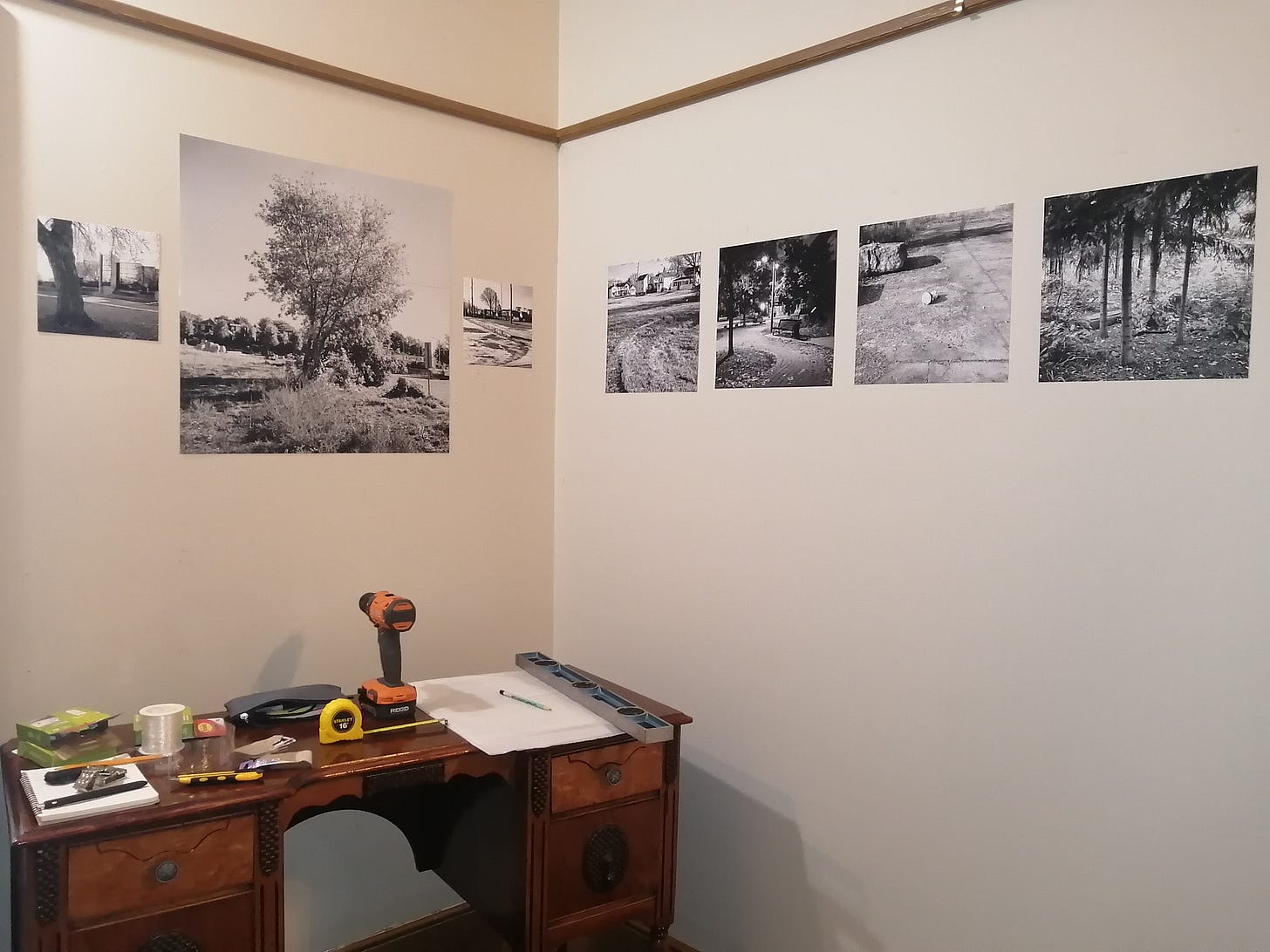
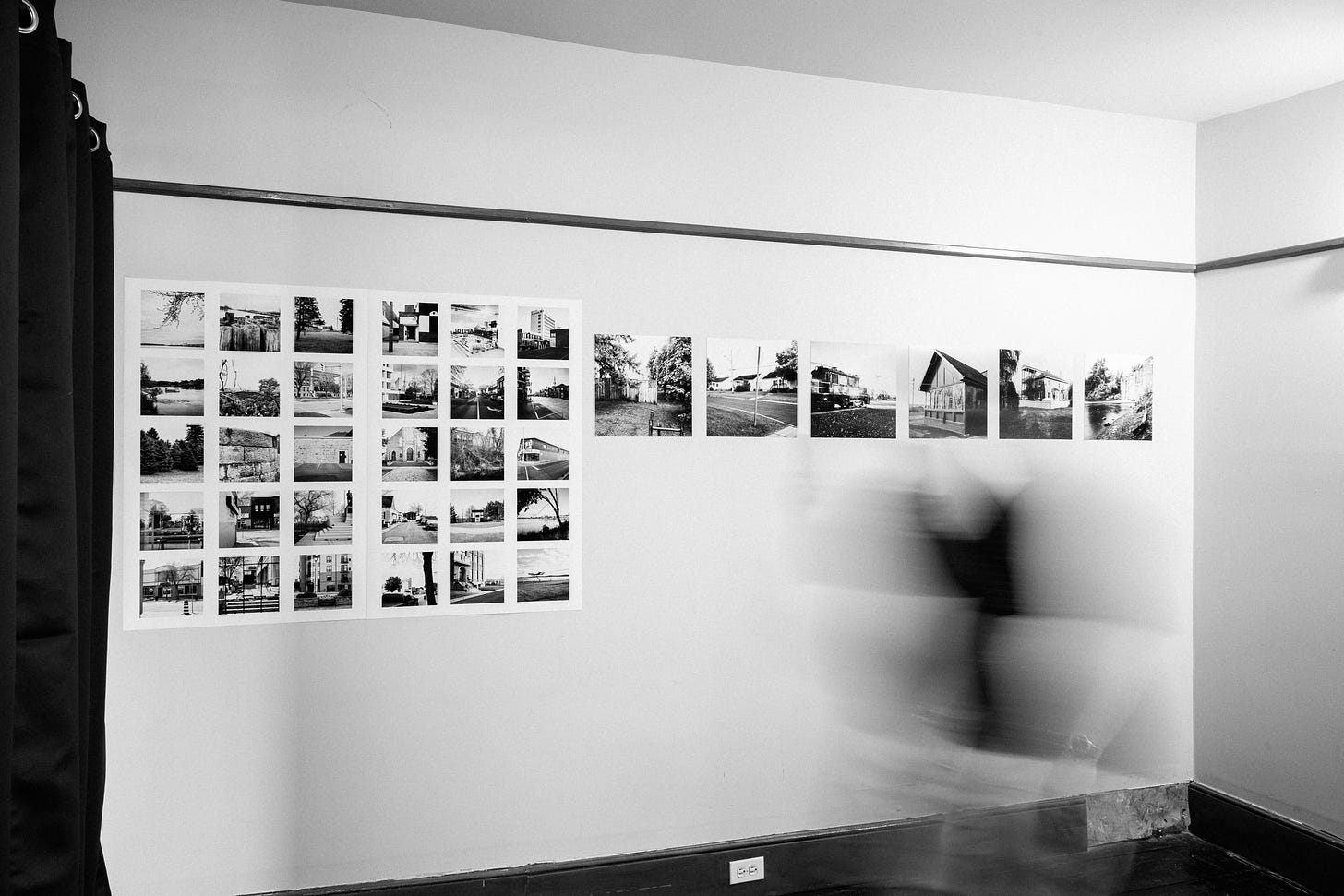
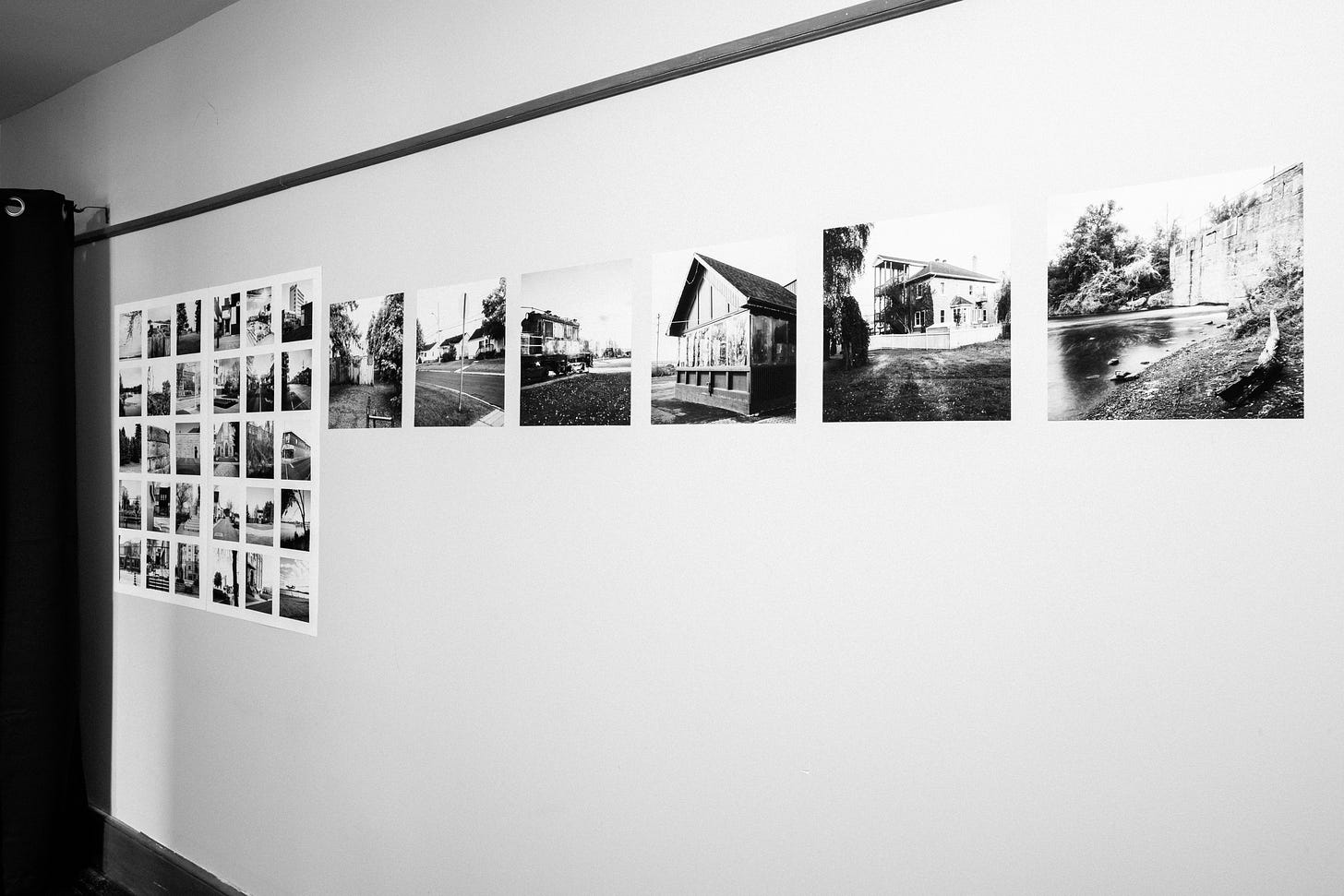
This video was taken by the curator a few days after the two of us mounted the exhibition showing it in its final form with the title cards underneath the images which are an essential component to the show as they tell the viewer what was there in that location and my goal was to allow the viewer to be a child or a detective and use their sense of curiosity and wonder to examine the image before them with the prompt from the title to see the images not as a form of nostalgia or lament, but as a launchpad for the imagination, and for conversation about how we preserve and celebrate local history as a community.
The exhibition is officially open, so if any of my readers are interested in seeing it in person, I have listed the details about the location and operating hours below.
Of course, the downside of an exhibition is that it is located in a specific place, which will make it inaccessible to almost everyone reading today’s newsletter. I hope that the installation images and video provide you with an equivalent experience.
I want to take this opportunity to thank the following people: Brent Whitford, the curator at the Cornwall Community Museum, for providing me with this incredible opportunity and for being so open and flexible throughout the whole process, to Don Smith for providing me with new and interesting areas in Cornwall to explore for this project, to Prune Paycha for printing the exhibition for me at a size an cost I would have not found anywhere else, to my peers Phoenix Kanada, Francois Hosay, Dean Garlick, Eric Porier, Ari Magnusson, Ryan McBride, Jean Salomez-Granier, Aurelie Painnece, Kristan Klimczak, Cristian Ordonez, and many more I am probably forgetting for providing me with your support and feedback on my work.
I would also like to thank my grandmother for always keeping my bed made and belly full every time I came down to work on this project. Without your help, Granny, I wouldn’t have been able to afford to make this project possible. Thank you, Aunt Barbara, for giving me a lift back home whenever I needed one, especially when I had to transport the prints to set up the show.
A heartfelt thank you goes to Marcello Mancuso, Phoenix Kanada, and David Simonton, who purchased prints from me, which funded the travel expenses of my last few trips to Cornwall, required to gather the last of the images to make this exhibition possible.
To my wife Kristen, the most enormous thank you of all goes out to you for being there by my side through all the ugly bits of being a creative person and for walking me back from the edge time and time again, your love, support, and space you provide me to do what I do is never taken for granted, I love you.
And, of course, thank you to you, yes, you—everyone of you who has championed me through this newsletter and shown your support in various ways. I thank you all for being with me on this journey; it does not go unnoticed.
The exhibition is on view at the Cornwall Community Museum located at 160 Water Street West, Cornwall, Ontario, K6H 5T5. You can find their business hours on their website by clicking on this link to find out more.
The show will run until the end of May 2026, and the official opening is scheduled to be announced in the coming month. Of course, I will be at the grand opening, so keep an eye out for the announcement if you'd like to see the show in person and hang out with me as well!
Thank you all again for your support. If you do get a chance to see my show, please take pictures and share them with me, along with your thoughts on the exhibition.
Take care, Matt.


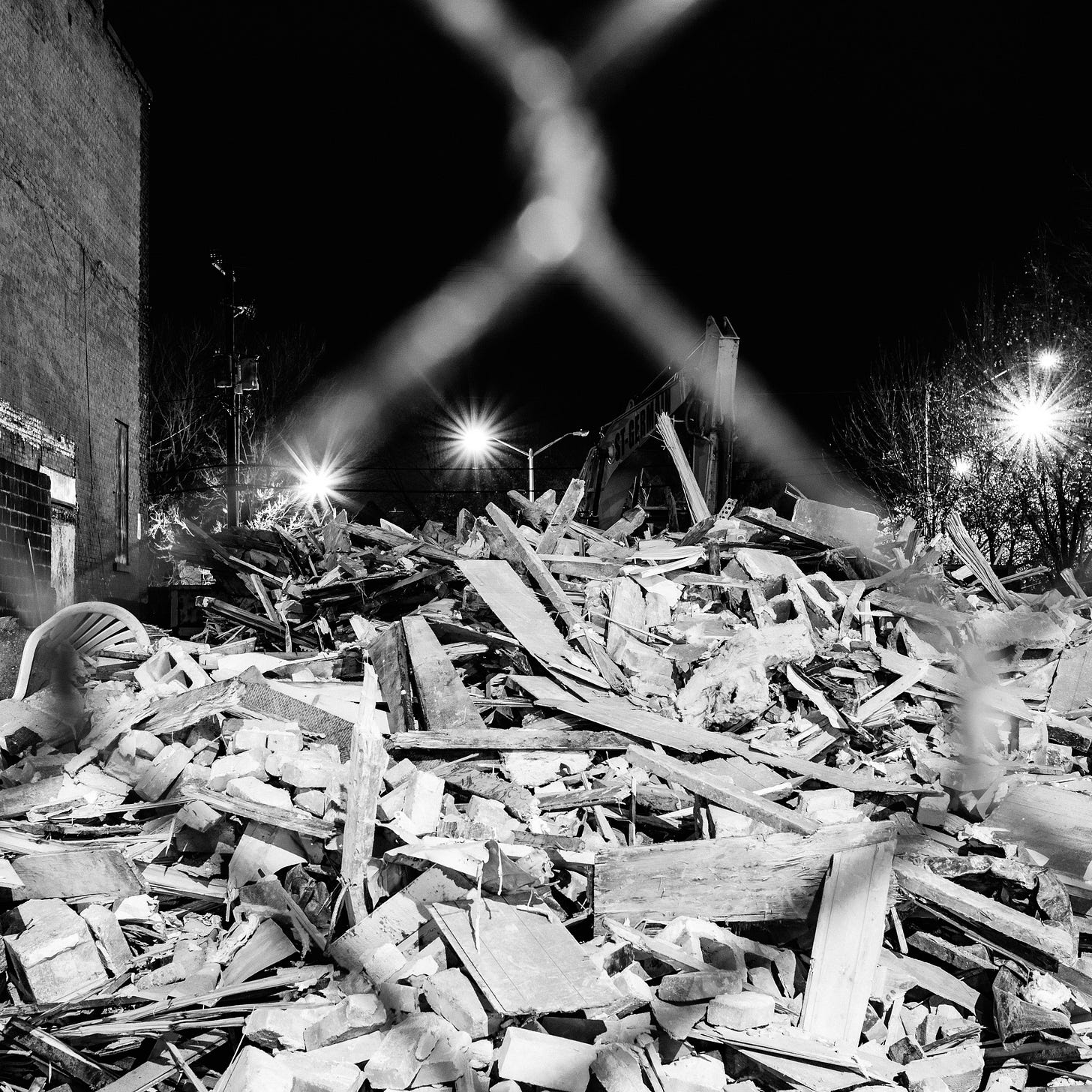
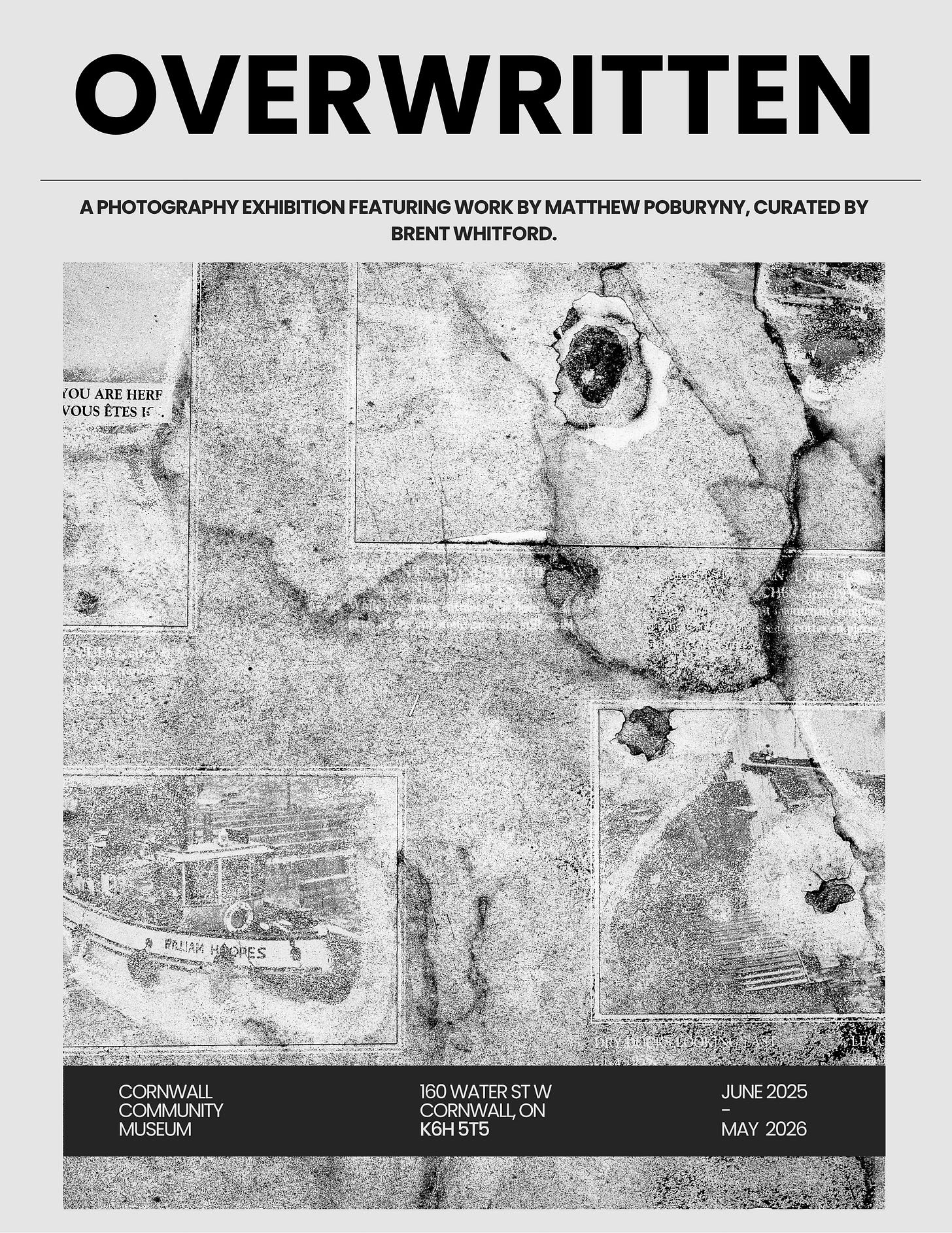

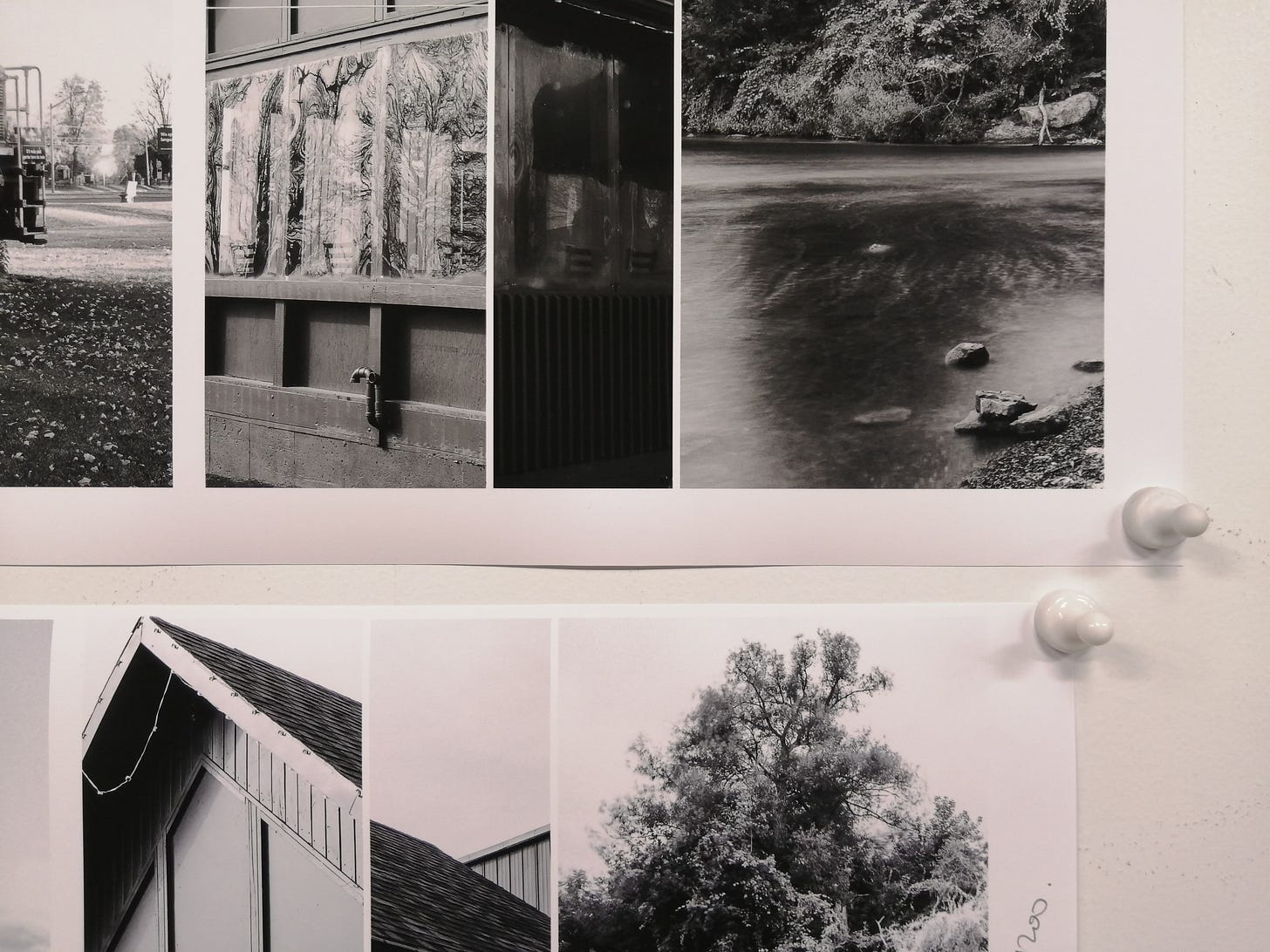

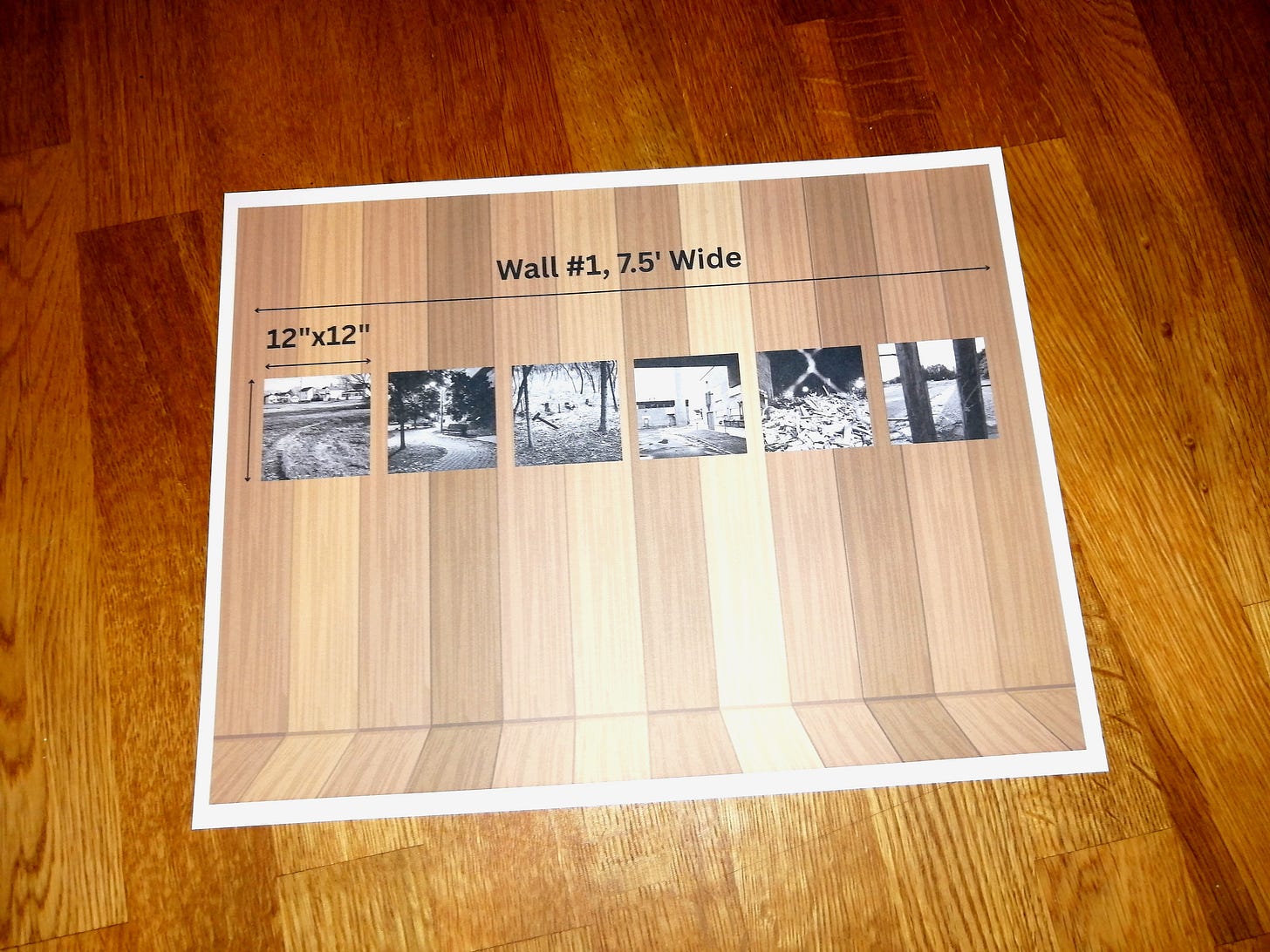
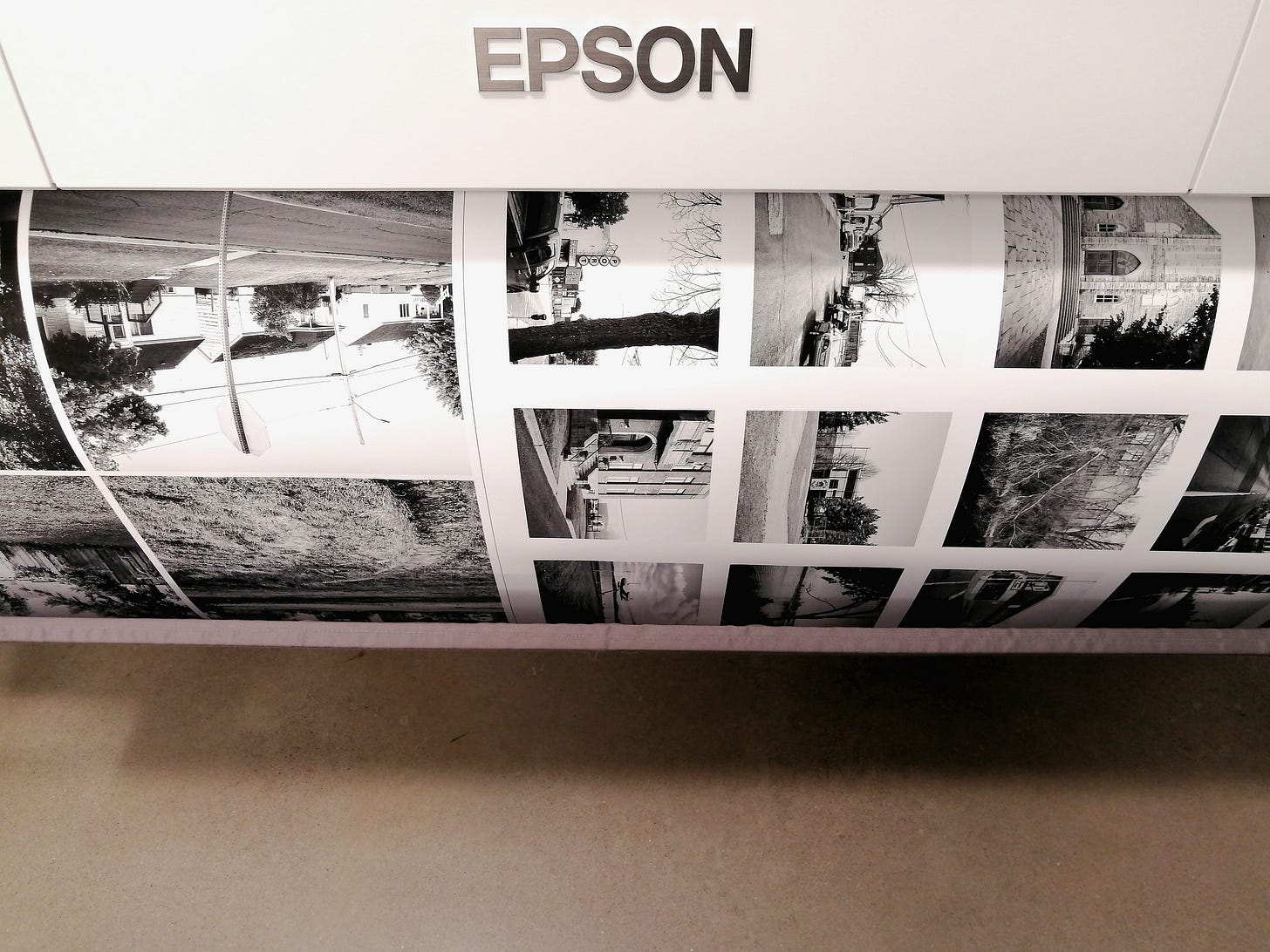
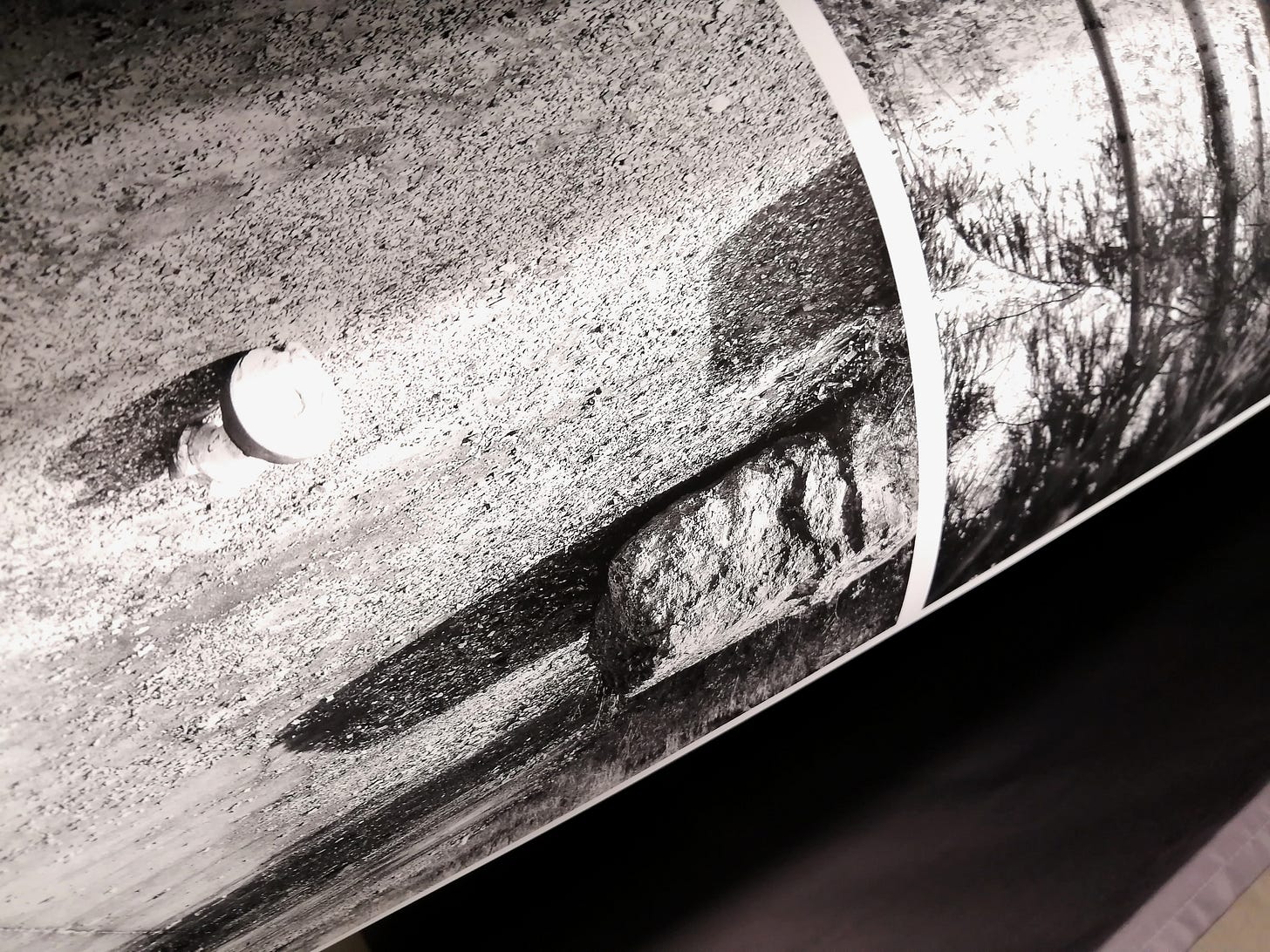

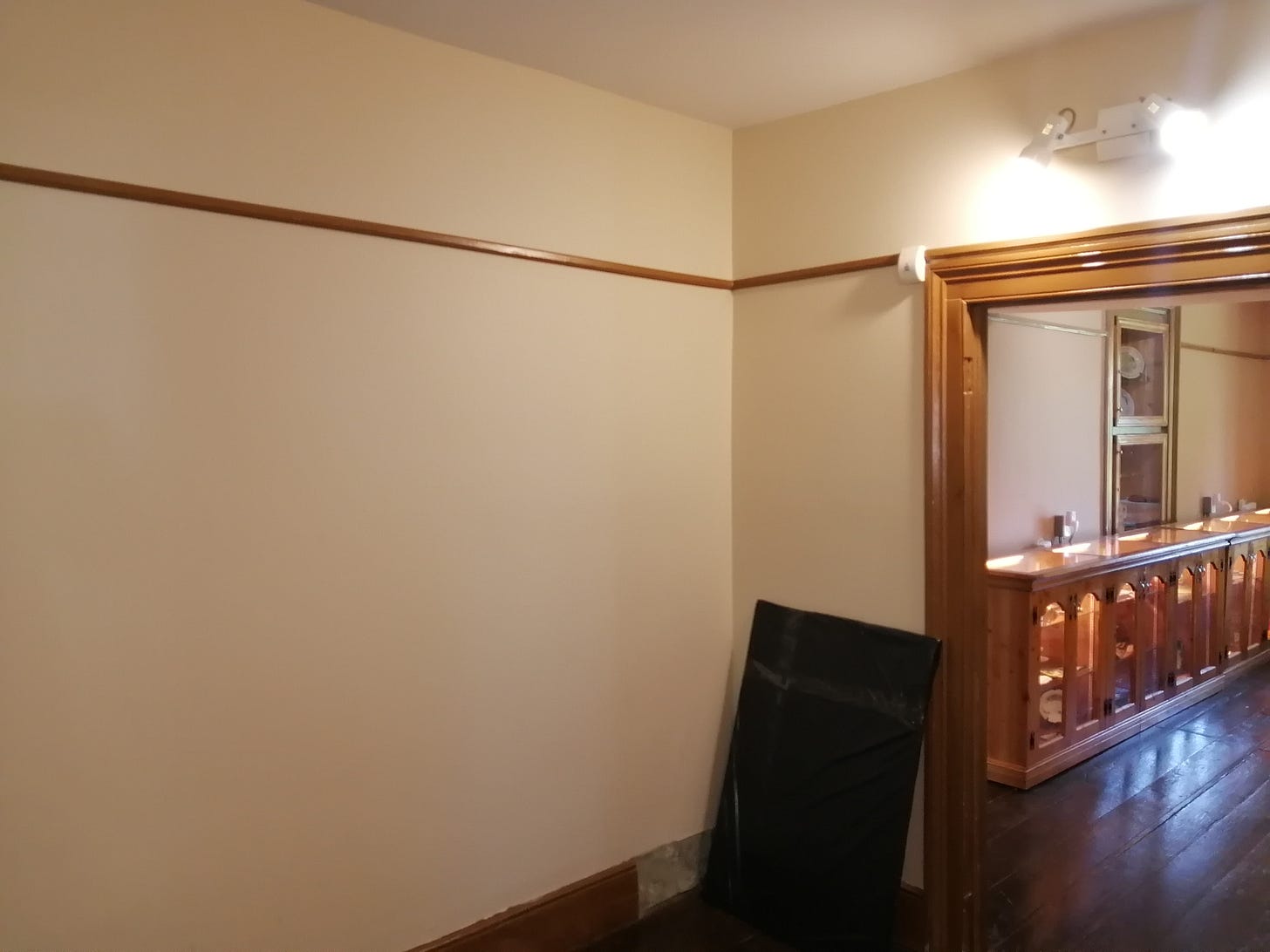
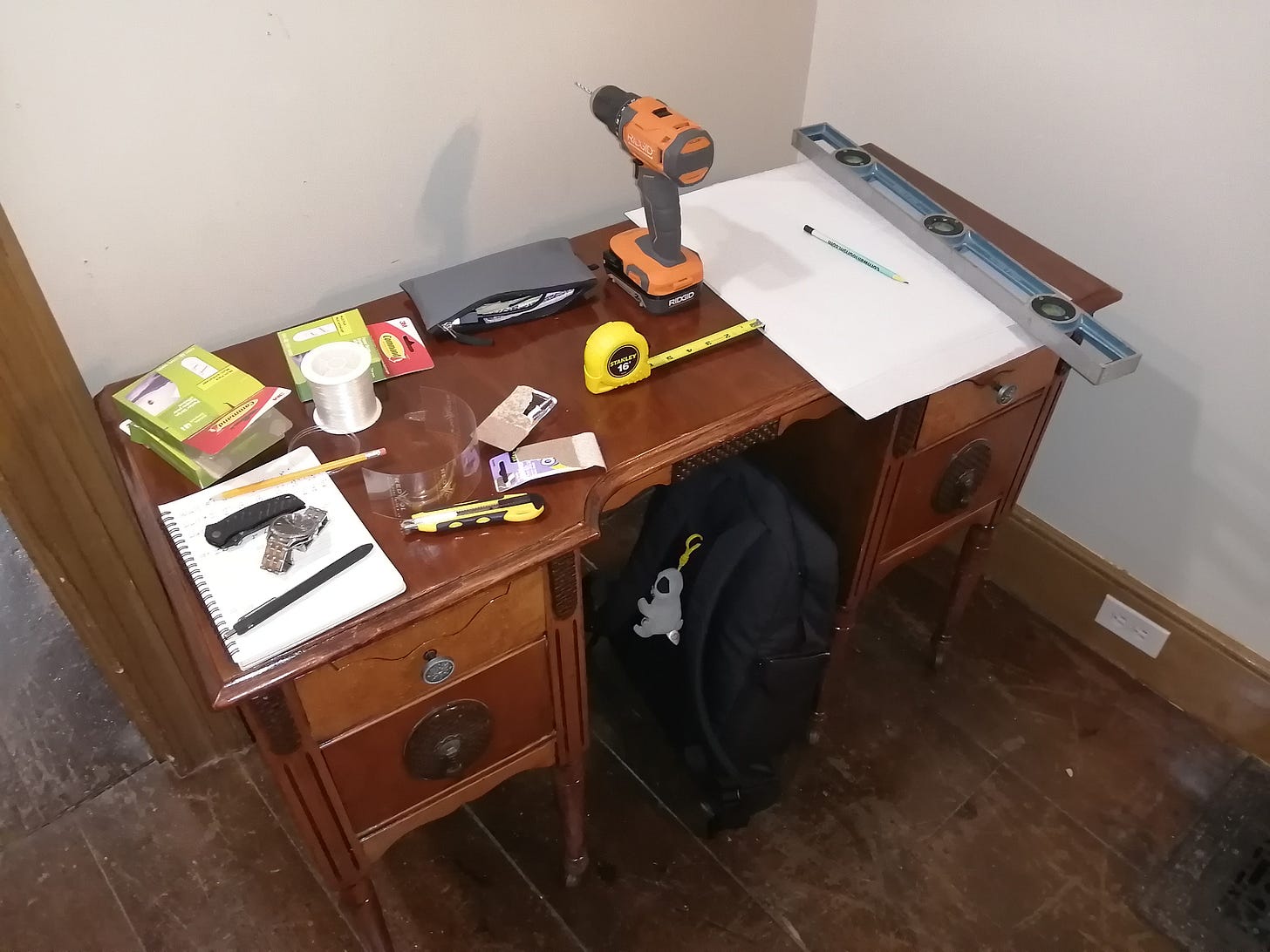

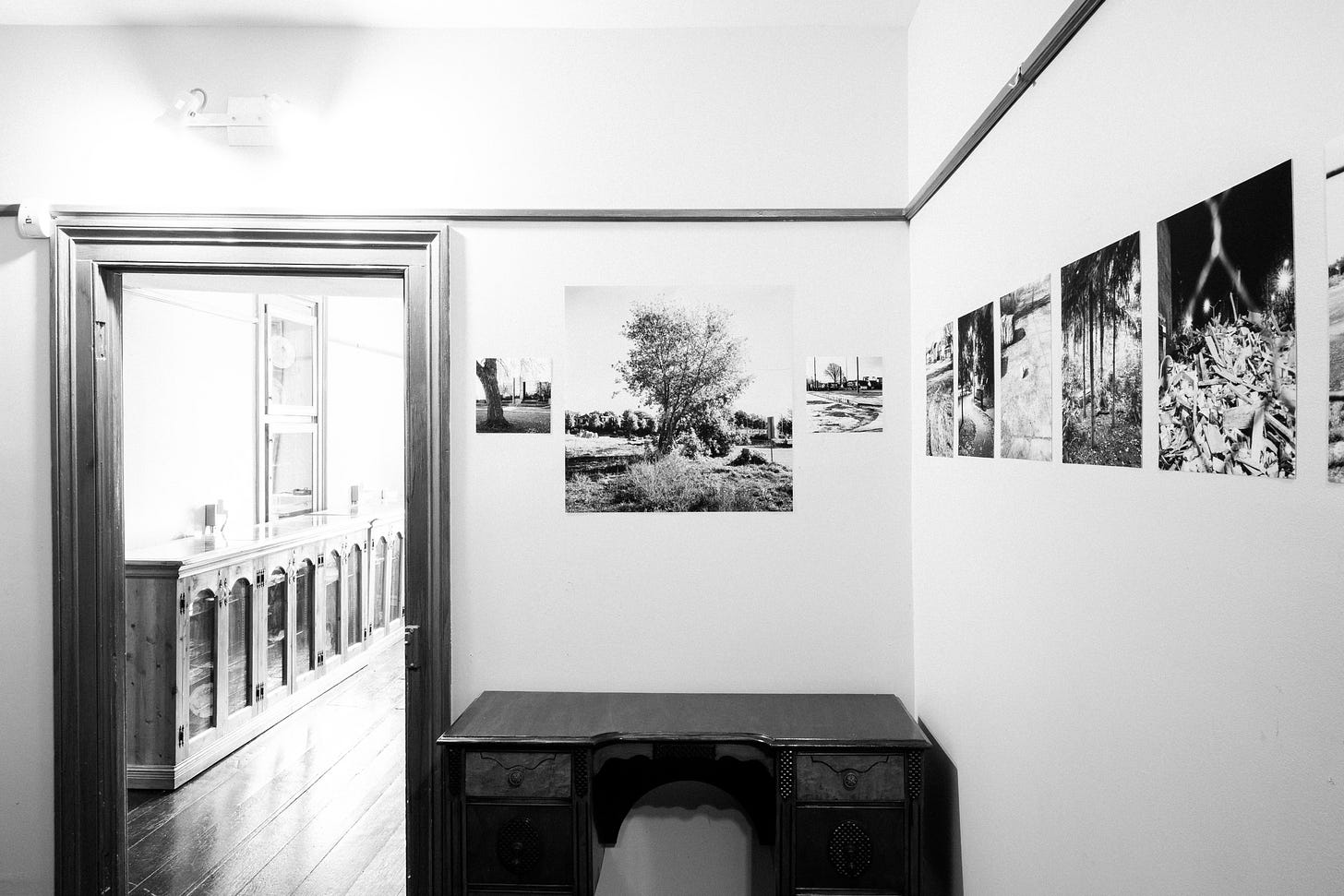
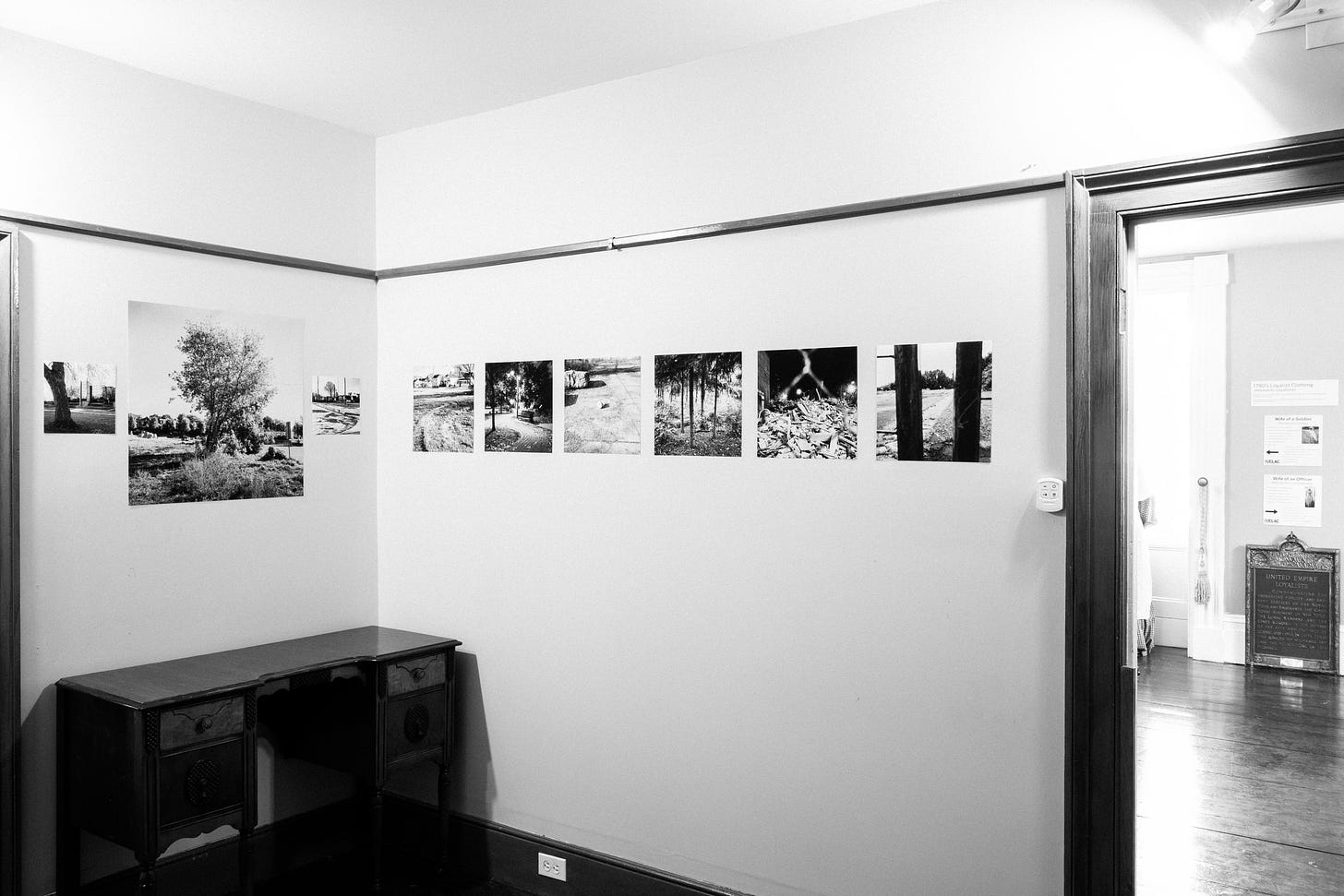
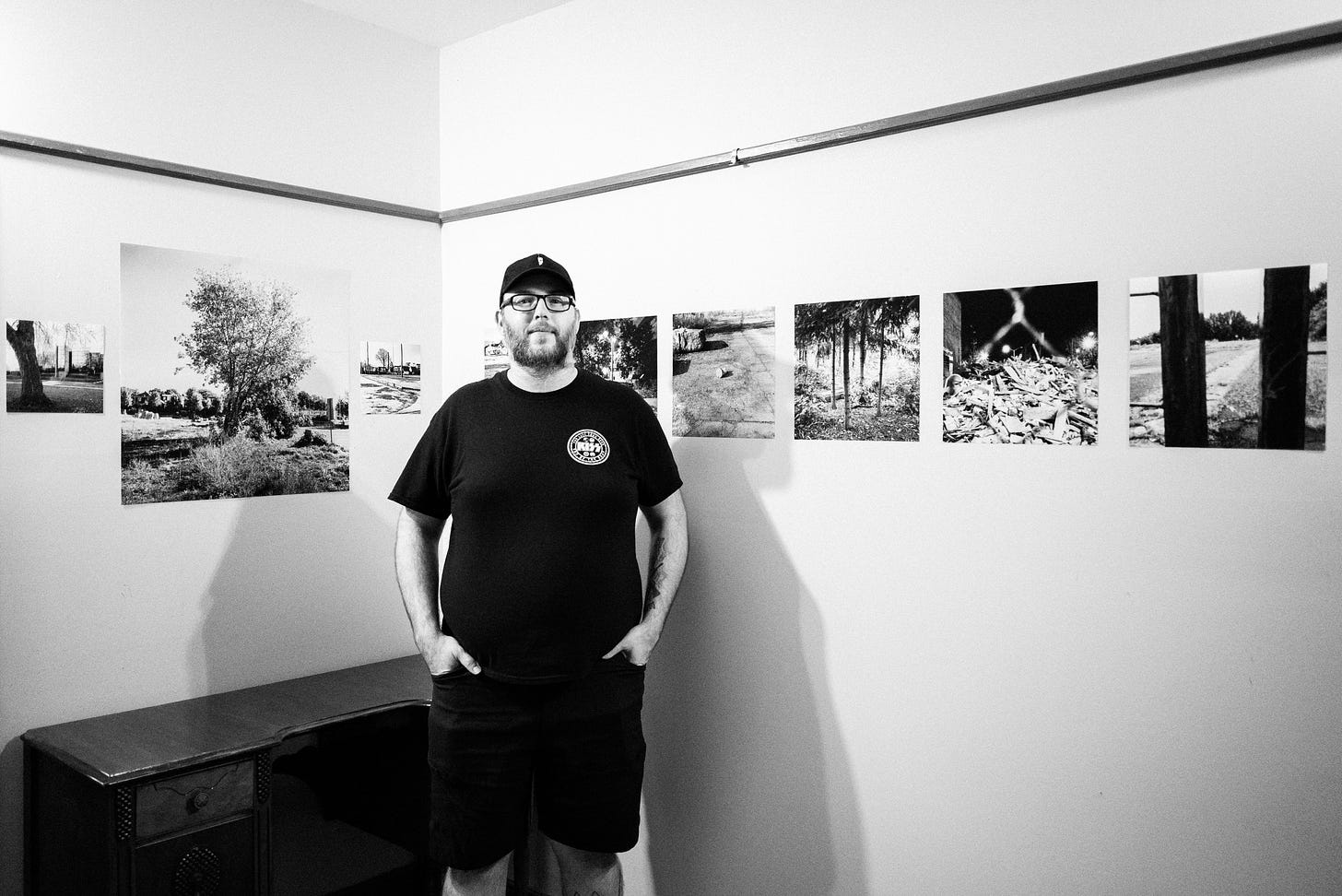
I love that you detailed out your process and how everything went down. It's a great way to give back!! I think it's an amazing way too for a "welcome back" message. Congratulations!
your endless insight on process, the reality of photography and the work behind the scenes is priceless, man. I’m honored to have helped in any way!! You rock🤘